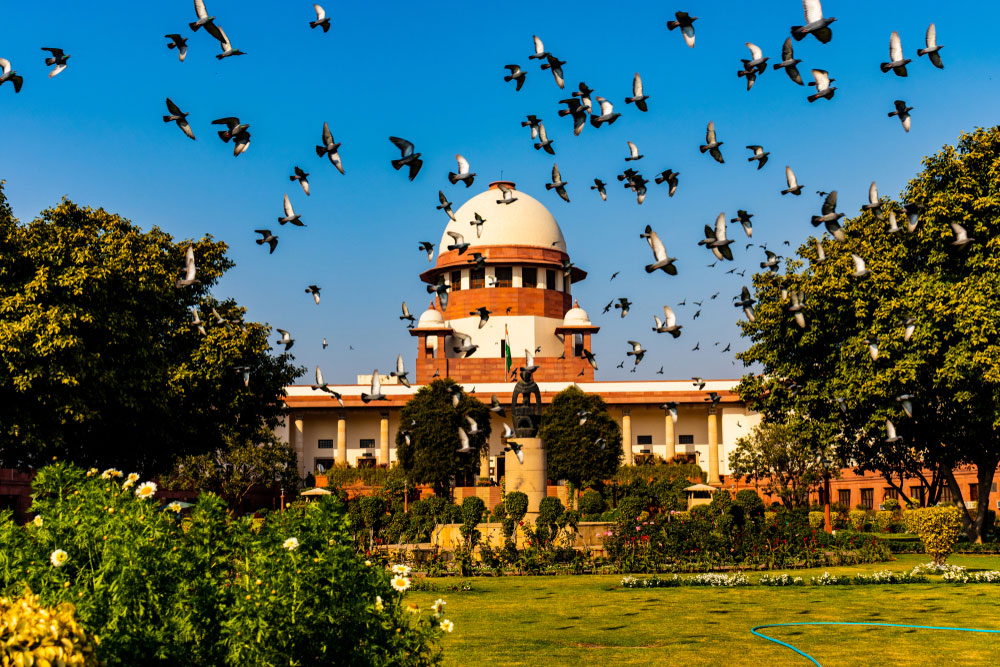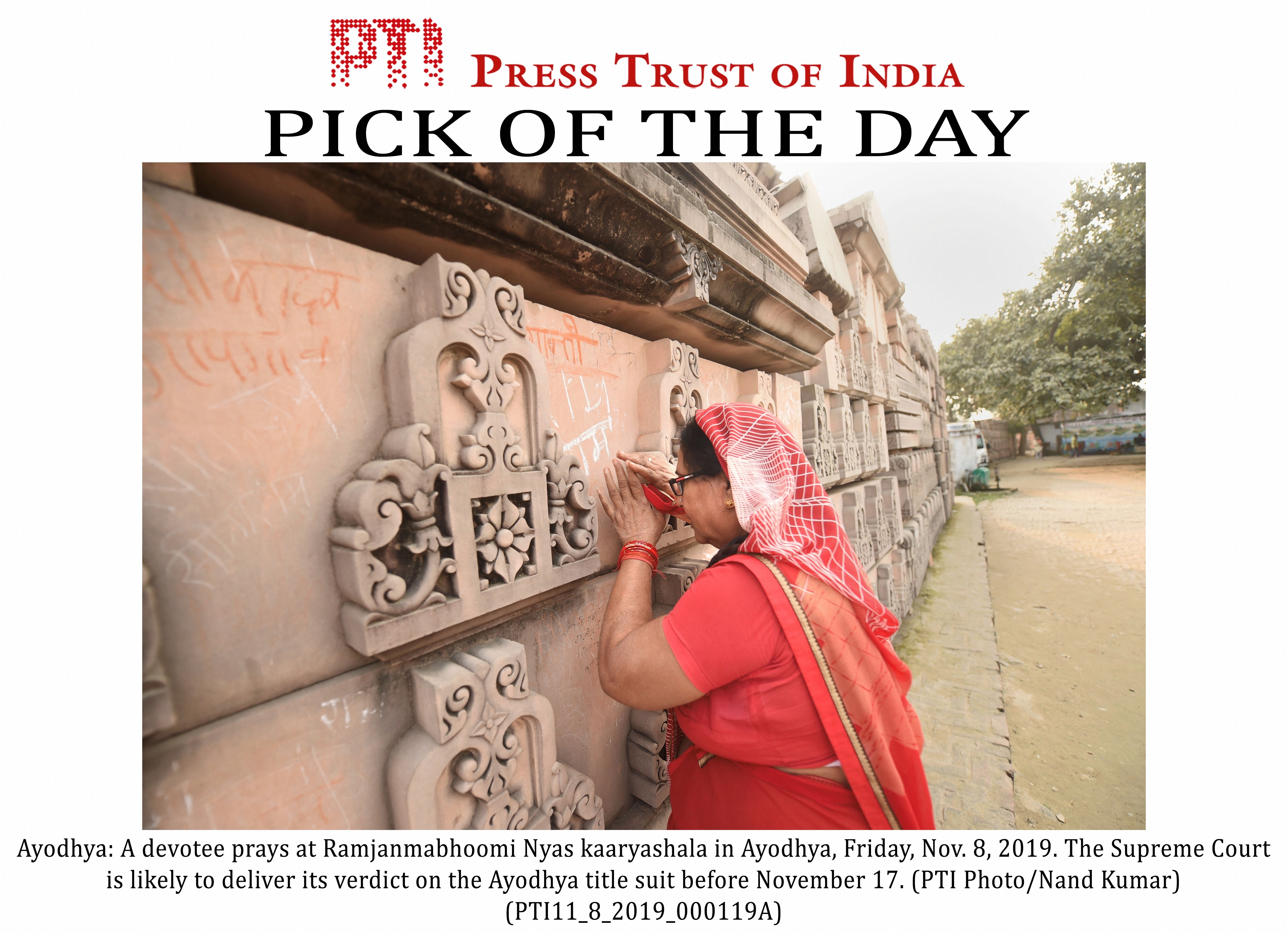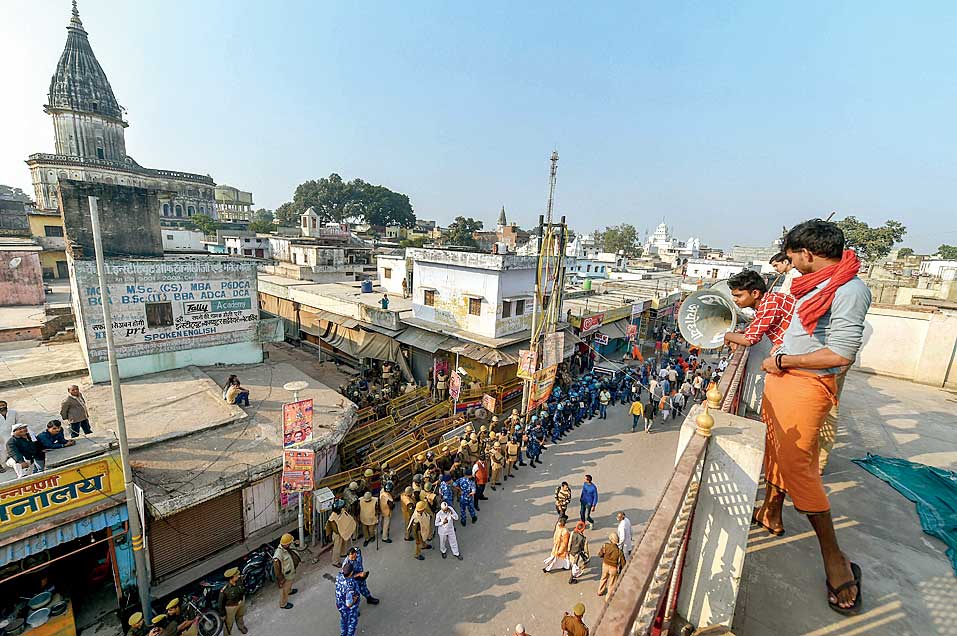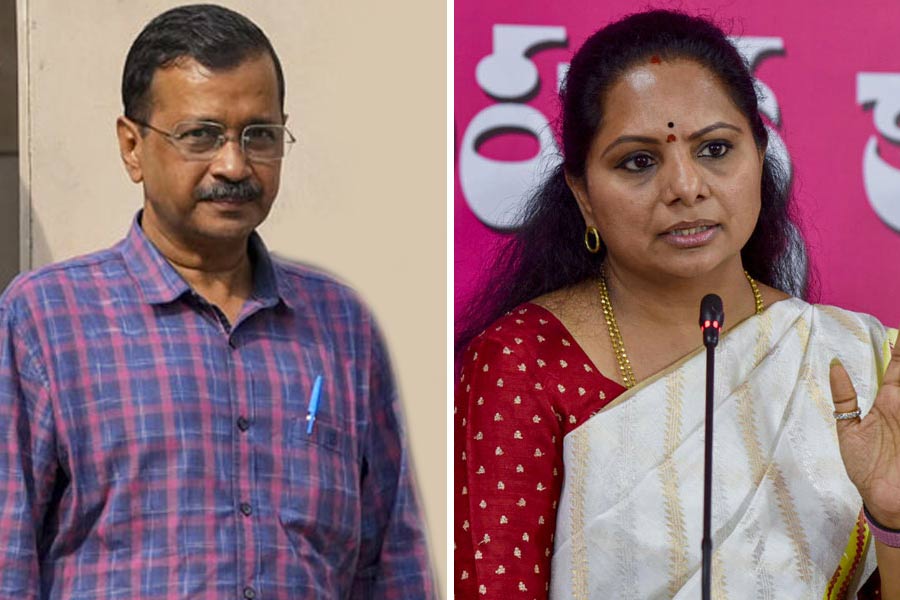The apex court bench was led by the soon-to-retire Chief Justice of India, Ranjan Gogoi. The other judges were Justices S.A. Bobde, D.Y. Chandrachud, Ashok Bhushan and S.A. Nazeer.
During the hearings, Rajiv Dhavan, the lawyer for the Muslim parties, told the bench he had noticed that the judges' 'questions have been directed at me', not the Hindu parties.
On the other side, C.S. Vaidynathan, the lawyer for Ram Lalla – the deity of the child Lord Ram – told the court that it was the ' belief of Hindus” that Lord Ram's birthplace is Ayodhya and “the court should not go beyond to see how rational (it is)'.
In its judgment, the bench wrote: 'Faith is a matter for the individual believer. Once the court has intrinsic material to accept that the faith or the belief is genuine and not a pretence, it must defer to the belief of the worshipper.'
Before the hearings, the top court also tried the mediation route. It set up a panel of three – retired judge Ibrahim Kalifullah, art of living guru Ravi Shankar and senior advocate Sriram Panchu. The committee, set up in March, failed to find a solution, and the matter returned to the court.
The BJP, the RSS and its affiliate organisations have always wanted a temple of Lord Ram to be built where the mosque once stood. “Mandir yahin banayenge (we will make the temple right here)” became an oft-heard slogan at political meetings under Modi’s rule.
Section 144 was enforced in Ayodhya on October 12 and will be in force till December 10.
The Uttar Pradesh government ordered all educational and training institutes to stay shut till Monday.
The 2.77 acres of disputed land in Ayodhya has gone entirely to Hindus, and Muslims will be given an alternative piece of 5 acres in Ayodhya to build a mosque, the Supreme Court concluded in a unanimous judgment today.
The 'malikana haq' or the ownership right of the disputed land was given to Ram Lalla, or the child Lord Ram, who was represented in the case by Tirloki Nath Pandey, a senior Vishwa Hindu Parishad leader, who is referred to the next friend of the deity.
The court said the central government should within three months formulate a scheme to set up a trust for possession of the inner and outer courtyards of the disputed site. Till such a trust is formed, the government will hold the land.
The trust will have, among others, the Nirmohi Akhara, whose claim to ownership of the land was dismissed today.
The verdict in effect has given control of the land, where the mosque once stood, to entities that were in some way linked to the Babri Masjid demolition in December 1992. The BJP, VHP and other Hindutva outfit leaders were at the forefront of the Ram temple movement throughout the 1980s and 1990s. Now a senior VHP leader, by virtue of being the next friend of the deity, will have control of the site.
Prime Minister Narendra Modi, addressing the nation tonight, spoke about 'staying united and growing together. Today is about the message of integration and emerging victorious together.'
In tweets earlier in the day, Modi spoke about the 'spirit of unity', and said that the dispute was 'amicably solved'.
But a section of Muslim litigants and community leaders clearly don't agree with the Prime Minister.
The All India Muslim Personal Law Board did not rule out a review of the order. Another Muslim leader, Asaduddin Owaisi of the All India Majlis-e-Ittehadul Muslimeen (AIMIM), said the Ayodhya case was not about giving land to the community, it was about the 'right of Muslims' in India. He said the community should reject the five-acre alternative land that is being offered to them.
At the heart of the case was a ownership title dispute dealing with the 2.77 acres. The Supreme Court had to decide who owned this land. But this piece of real estate has become the most divisive political weapon in modern India.
On December 6, 1992, a Hindu mob gathered in Ayodhya, and in the presence of BJP and other Hindutva leaders it demolished much of the Babri Masjid that was built in the 16th century and named after Babur, the first Mughal ruler.
The demolition triggered riots across the country that took 2,000 lives, mostly of Muslims. On March 12, 1993, in a devastating retaliation to the demolition, an organised crime syndicate led by Tiger Memon triggered 12 coordinated blasts in Bombay that killed 250 people.
In 2010, an Allahabad High Court judgment divided the 2.77 acres into three equal parts. Two portions went to Hindu parties -- the Nirmohi Akhara and Ram Lalla Virajmaan -- and one portion to the Uttar Pradesh Central Sunni Wakf Board. The two Hindu parties and the Muslim side contested this judgment and moved the country’s top court.
The Supreme Court heard the matter for 40 days and concluded the hearing on October 16. It ended on an ominous note when a map on the purported birthplace of Lord Ram was torn up in court. That day, a rumour raged outside the courtroom that the Sunni Wakf Board had withdrawn its claim to the land.












